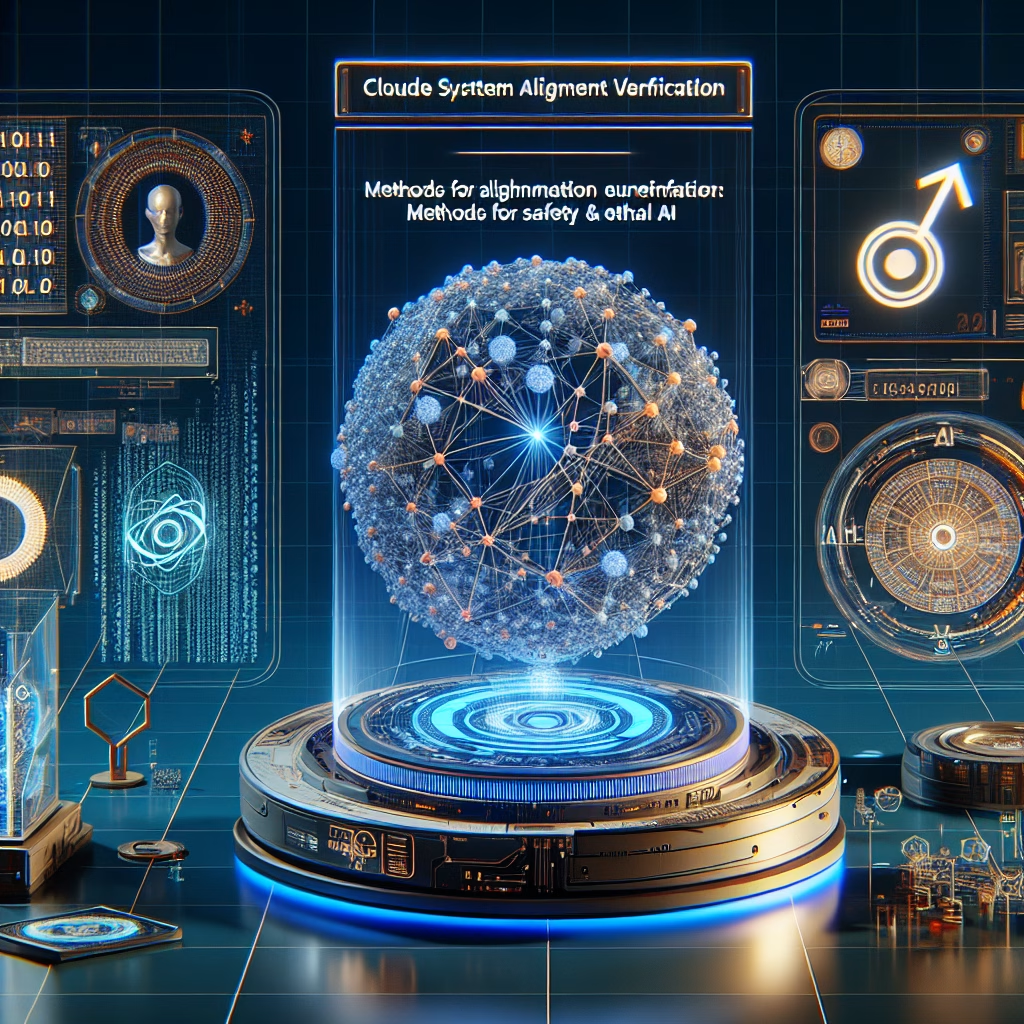Claude AI System Alignment Verification Methods
Summary:
Claude AI system alignment verification methods ensure that AI models behave as intended and align with human values. These techniques involve rigorous testing, ethical guidelines, and iterative feedback loops to minimize harmful outputs and biases. Developed by Anthropic, Claude AI emphasizes safety and reliability through methods like constitutional AI and reinforcement learning from human feedback (RLHF). Understanding these verification methods is crucial for developers, businesses, and policymakers to deploy AI responsibly. This article explores how Claude AI maintains alignment, its strengths, limitations, and practical implications for users.
What This Means for You:
- Increased Trust in AI Outputs: Claude AI’s alignment verification methods reduce risks of misinformation and harmful content, making AI interactions safer for users. Businesses can rely on Claude for customer service and content generation with fewer ethical concerns.
- Actionable Advice for Developers: If you’re integrating Claude AI into applications, prioritize alignment checks by using built-in moderation tools and fine-tuning models with domain-specific datasets to enhance accuracy.
- Actionable Advice for Businesses: Implement periodic audits of Claude AI’s outputs to ensure compliance with industry regulations and ethical standards. Training staff on recognizing alignment issues can further mitigate risks.
- Future Outlook or Warning: As AI models grow more complex, alignment verification will become even more critical. However, over-reliance on automated alignment checks without human oversight could lead to unnoticed biases or failures.
Explained: Claude AI System Alignment Verification Methods
Understanding Alignment in AI
Alignment refers to ensuring AI models follow human intentions and ethical guidelines. Claude AI employs multiple verification methods to achieve this, including constitutional AI, where predefined rules govern behavior, and RLHF, where human feedback refines model responses.
Key Verification Techniques
Constitutional AI: Claude AI adheres to a set of principles that prioritize harmlessness, honesty, and helpfulness. These principles act as guardrails, preventing the model from generating harmful or biased content.
Reinforcement Learning from Human Feedback (RLHF): Human reviewers evaluate Claude’s outputs, and their feedback trains the model to improve alignment over time. This iterative process enhances accuracy and reduces unintended behaviors.
Automated Alignment Checks: Claude uses internal scoring systems to flag potentially harmful or off-topic responses before they reach users. These checks include toxicity filters and coherence evaluations.
Strengths of Claude’s Alignment Methods
Claude AI’s verification methods are highly scalable, allowing for consistent alignment across diverse applications. The combination of human oversight and automated tools ensures a balanced approach, minimizing both biases and operational costs.
Limitations and Challenges
Despite its strengths, Claude AI’s alignment methods are not foolproof. Edge cases, where the model encounters unfamiliar scenarios, can still produce misaligned outputs. Additionally, reliance on human reviewers introduces subjectivity, which may affect consistency.
Best Practices for Users
To maximize Claude AI’s alignment, users should:
- Provide clear, context-rich prompts to reduce ambiguity.
- Regularly review outputs for alignment with intended use cases.
- Stay updated with Anthropic’s alignment guidelines and updates.
People Also Ask About:
- How does Claude AI ensure ethical behavior? Claude AI uses constitutional AI principles and RLHF to align outputs with ethical standards. Human reviewers and automated checks further refine responses to avoid harmful or biased content.
- What industries benefit most from Claude AI’s alignment methods? Healthcare, finance, and customer service sectors benefit significantly, as these fields require high accuracy and ethical compliance in AI-generated content.
- Can Claude AI’s alignment methods be customized? Yes, businesses can fine-tune Claude AI with domain-specific datasets and alignment rules to better suit their needs while maintaining ethical standards.
- What are the risks of misaligned AI outputs? Misaligned outputs can spread misinformation, reinforce biases, or harm user trust. Claude’s verification methods aim to mitigate these risks but require ongoing monitoring.
Expert Opinion:
AI alignment verification is a cornerstone of responsible AI deployment. Claude AI’s methods set a strong precedent, but continuous improvement is necessary to address emerging challenges. Experts emphasize the importance of combining automated checks with human oversight to ensure long-term safety and reliability. As AI evolves, alignment techniques must adapt to handle increasingly complex scenarios.
Extra Information:
- Anthropic’s Constitutional AI: Explains the principles guiding Claude AI’s alignment and safety measures.
- RLHF Research: Provides insights into reinforcement learning from human feedback, a key component of Claude’s alignment process.
Related Key Terms:
- Claude AI ethical alignment verification techniques
- Best practices for Claude AI system alignment
- How RLHF improves Claude AI alignment
- Claude AI constitutional AI principles explained
- Limitations of AI alignment verification methods
Check out our AI Model Comparison Tool here: AI Model Comparison Tool
#Claude #System #Alignment #Verification #Methods #Safety #Accuracy #Ethical
*Featured image provided by Dall-E 3





